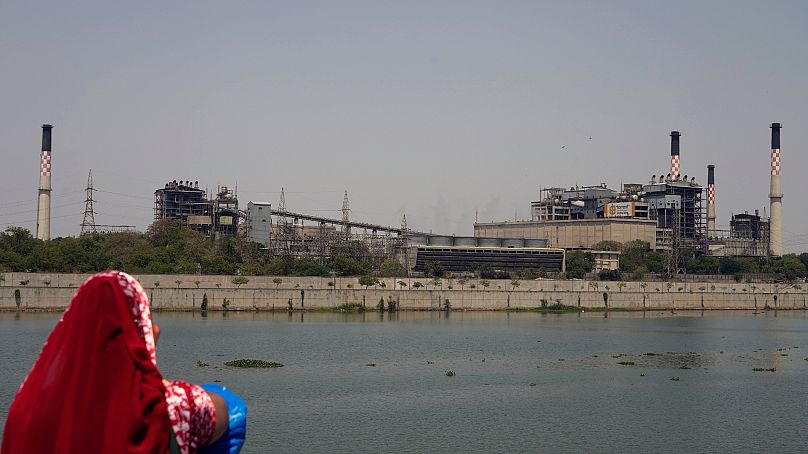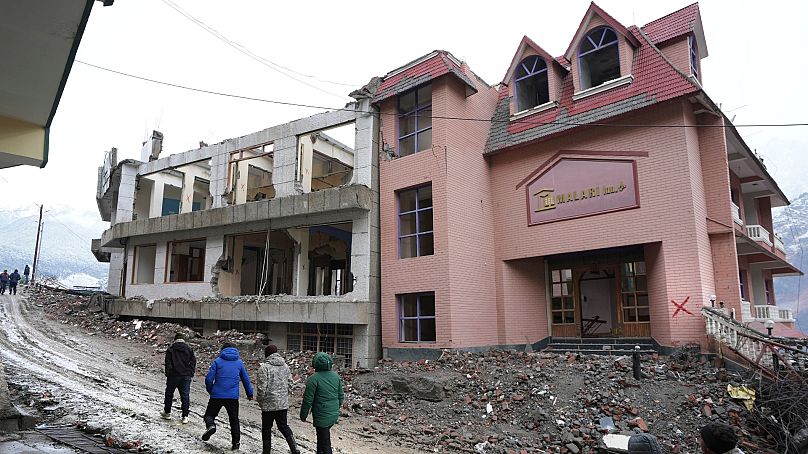Supplying the country’s 1.4 billion citizens with clean energy is not an easy task.
In the last year, India’s power generation has grown at its fastest pace in 33 years.
The country is the world’s third-biggest greenhouse gas emitter and as it looks to reach net zero by 2070, a rapid energy transition is needed to meet its climate goals.
But long summer heatwaves and colder-than-expected winters in the north of the country forced India to crank up production from coal-fired plants and solar to avoid power cuts in 2022.
India faces a double bind: being one of the world’s fastest-growing economies with 1.4 billion citizens who need power, while trying to wean itself off of fossil fuels.
Can India get rid of its coal-fired power plants?
Part of India’s energy growth in 2022 was fuelled by coal. This fossil fuel now provides around 70 per cent of the country’s energy needs and this year it could burn 8 per cent more according to government data.
Despite commitments to ‘phase down’ the use of the fuel, there has been a surge in energy demand. Earlier this year the government asked utility companies not to retire coal-fired plants until 2030.
More people are working from home, extreme weather has increased the need for air conditioning and industrial activities have picked back up after the COVID-19 pandemic. India experienced more than 200 days of heatwaves in the early summer season of 2022 - five times the number during the same period in 2021.
This week, the government also ordered coal and oil-fired generators to run at full power from April to June. Officials are hoping that fossil fuels can keep the lights on as air conditioners and other cooling systems across the country exhaust the electricity grid.
Renewable energy is also rising in India
Renewable power is growing too, however. India is currently the fourth largest country in the world for installed hydroelectricity, wind and solar energy.
It is hoping to install 250 gigawatts more of green energy by 2028 and cut emissions by 45 per cent from what they were in 2005. The goal is for renewables to supply half of its total energy mix by 2030.
To do this, the country’s Power Secretary Alok Kumar has said that India needs to rapidly build clean power plants. These will also help the country to meet its climate goals.
On the sidelines of a G20 energy meeting on Monday, Kumar said that the transition would be “very, very difficult” if there wasn’t a focus on promoting local manufacturing, according to The Economic Times. This local manufacturing includes green technologies like solar panels and battery storage - essential to the energy transition.
To meet its international climate commitments, Kumar said that the share of clean sources in India’s power generation mix needs to surge to 90 per cent by 2047 - more than double what it is now.
Is hydropower the answer to India’s energy transition?
Hydroelectricity is one option to up the share of renewables. This solution would help to keep the lights on when the weather means that solar and wind can’t.
But there are concerns that the race to build more dams in the country risks a cascade of environmental disasters.
Joshimath, a holy town in the Himalayas, is sinking into the earth. Experts and activists say that construction work to accelerate hydropower projects in the region is partially responsible for making this subsidence worse.
The land needed to build them is also scarce, meaning communities are being displaced.
These environmental impacts have led to protests too, like those seen in Kinnaur where landslides claimed 22 lives in 2021.
And climate change could even change their ability to generate power, according to scientists at the Indian Institute of Technology (IIT), Gandhinagar. While more rain and warmer temperatures could increase their output, it also exposes the hydropower projects to increased risks like flooding and dam breaks.
Overall experts and researchers say that measures need to be put in place to control the impact of climate change including more risk assessments before projects begin.













